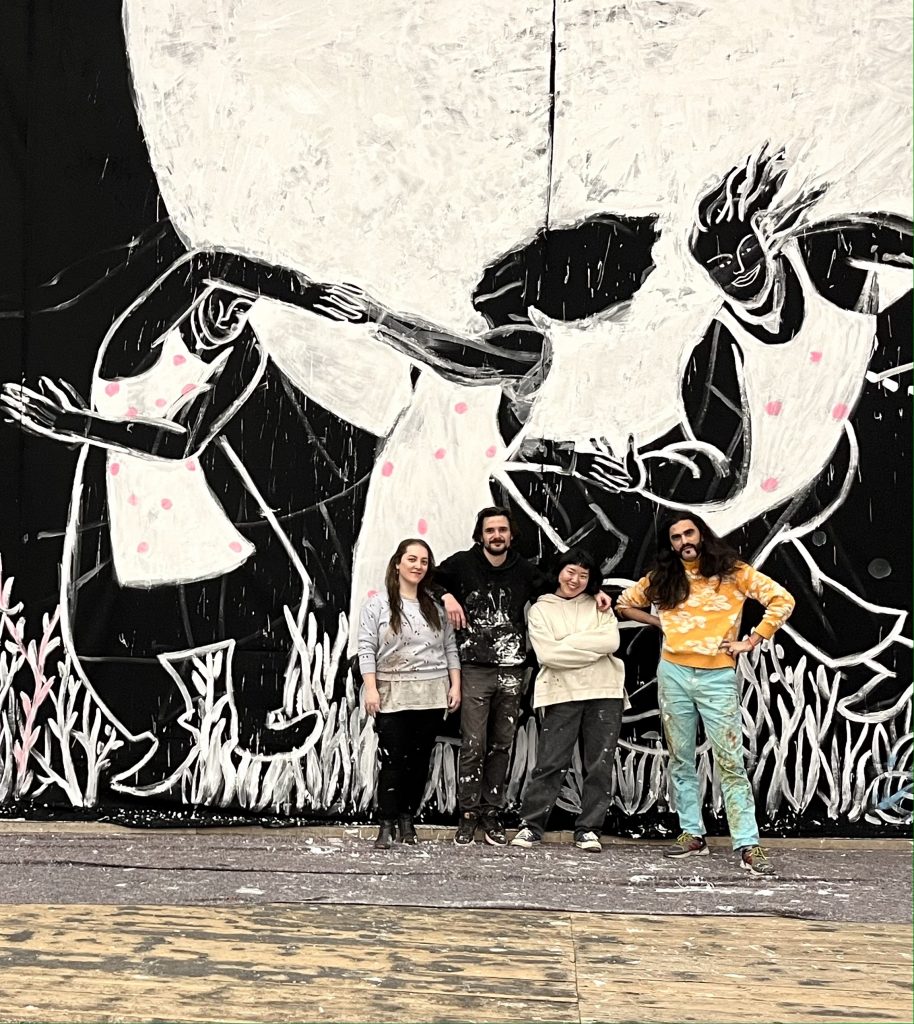
How do you set genetics in motion? Students of the Academy of Fine Arts project their ideas onto the walls of the ball disco.
A viewing by Dorian Schiffer
What would it look like in Gregor Mendel’s head if he could shake a leg at the Ball of Science? To answer this question, we simply transfer the father of genetics to the 21st century by means of a time machine, bring him up to date with Wikipedia and make him the guest of honor at Vienna’s City Hall. Intoxicated by the incredible diversity of knowledge in the world of Viennese research – and a glass of wine or two – colorful meadows of flowers, mathematical formulas and, again and again, peas pass before Mendel’s inner eye at the ball.
This is perhaps how one could explain the pictures that adorn the walls of the ball disco this year. In white paint on black Molton fabric – a light-absorbing fabric used in scenery construction – liana-like plants grow from tall grasses, over which giant pea pods float like strange spaceships. People can be seen there in front of the full moon, entwined in dance like a strand of DNA, while a researcher, unperturbed by the hustle and bustle surrounding him, carefully examines a chemical. Only isolated areas of color break the two-color aesthetic of the painting. This whimsical scientific world was created by students at the Academy of Fine Arts in Vienna, who thus find their way into Mendel’s legacy.
How did the motifs come about? “We got together and started sketching away. Because of the motto of the ball, the peas appear, but we also had to think of mathematics, hence the diagrams and formulas. And everything should look as if it came out of Mendel’s head,” explains Alberto Cap-pai, who designed and made the paintings together with Nam Kim, Bahare Rahimi and Pourea Alimirzaee. “Anyway, it should look as scientific as possible, at least what we artists imagine it to be,” Nam Kim laughs. Muscle power was needed – and a dash of ingenuity – to turn the initial design into the impressive wall hanging.
The full story can be found the in Ball Magazine.
Dorian Schiffer studies physics at the University of Vienna and writes about science, for example in Der Standard and alexandria magazine.